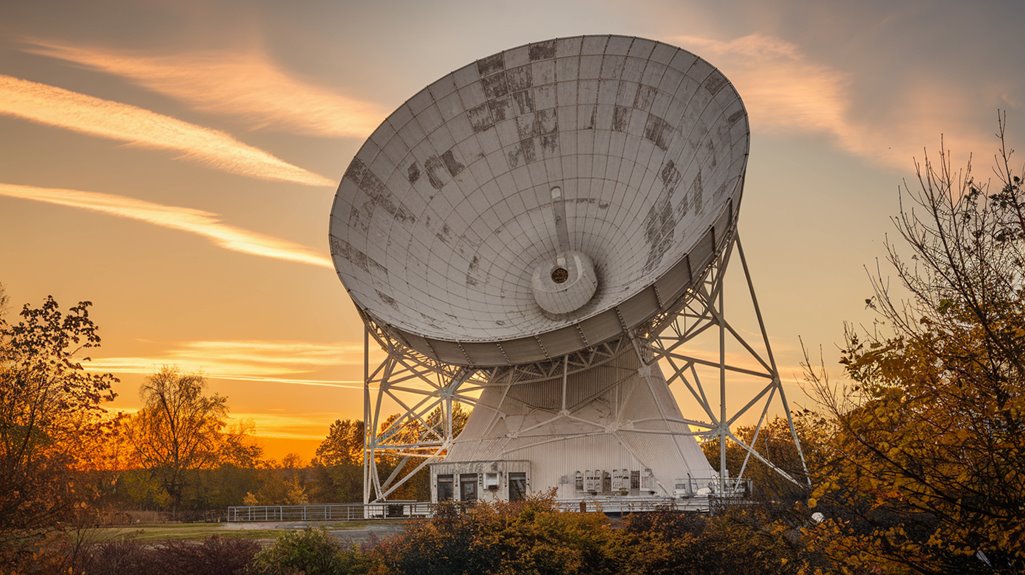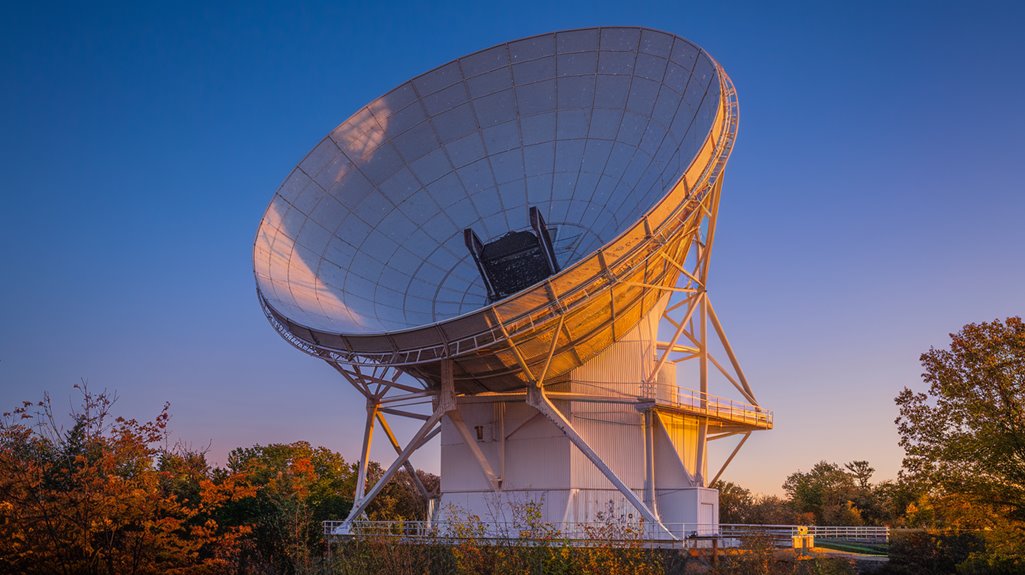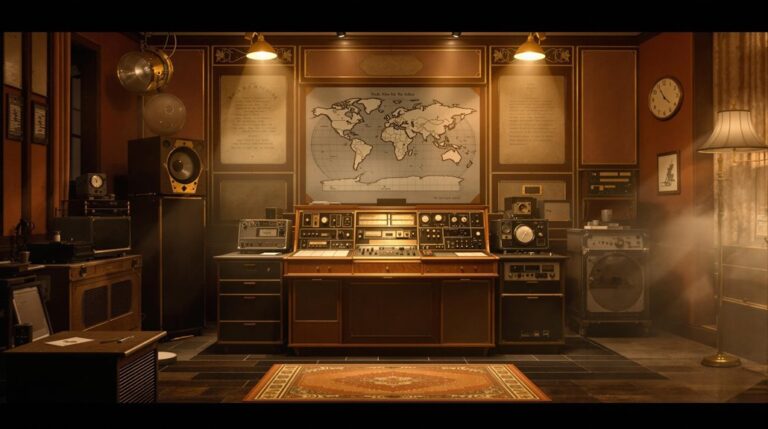Evidence of the Big Bang Was Found by Accident
Like Columbus stumbling upon the Americas while searching for India, you'll find that some of the greatest discoveries happen by accident. You've probably heard of the Big Bang theory, but you might not know that its strongest evidence came from two scientists who were simply trying to fix an annoying problem. Their frustration with a mysterious radio hum led them to uncover one of science's most profound revelations: the leftover echo of our universe's birth.
The Mysterious Noise That Changed Astronomy
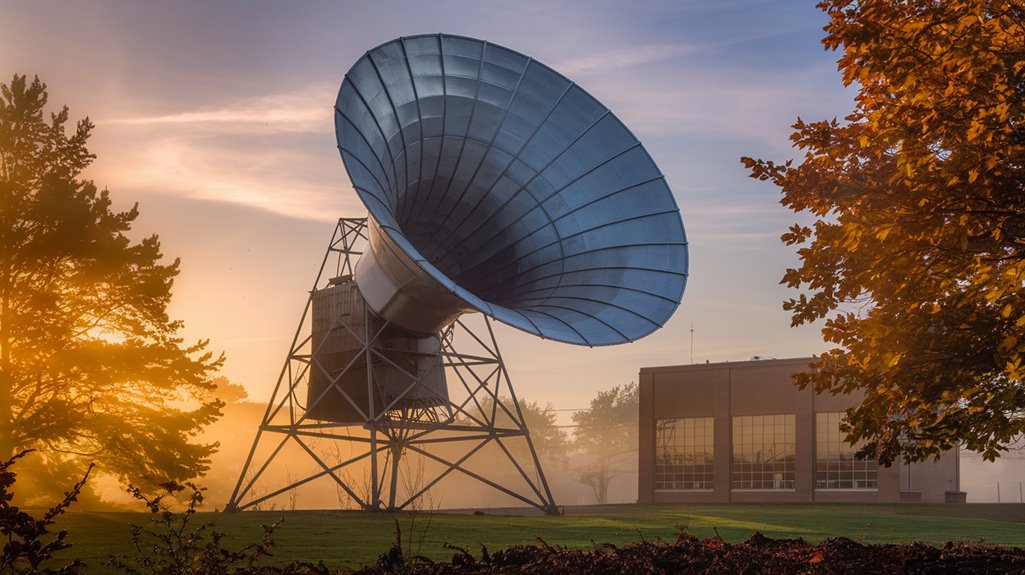
While conducting radio astronomy experiments at Bell Laboratories in 1964, Arno Penzias and Robert Wilson stumbled upon an unexpected discovery that would revolutionize our understanding of the universe.
Using a Dicke radiometer, they detected mysterious signals that wouldn't go away, despite their best efforts to eliminate interference. They even cleaned pigeon droppings from their antenna, thinking birds might be the culprit.
What started as a puzzling technical problem turned into a case of scientific serendipity. The persistent electromagnetic signal they detected was actually cosmic microwave background radiation (CMB), a remnant from the early universe that had been predicted by scientists Ralph Alpher and Robert Herman in 1948. The Holmdel Horn Antenna they used was originally built for satellite communication experiments before being repurposed for their groundbreaking discovery.
This accidental finding provided compelling evidence for the Big Bang theory, ultimately earning Penzias and Wilson the 1978 Nobel Prize in Physics. Their discovery effectively disproved the competing Steady State theory that had been proposed by Fred Hoyle in 1948.
From Radio Interference to Universal Discovery
After methodically investigating the mysterious radio interference at Bell Labs, Penzias and Wilson made a groundbreaking realization: the persistent buzzing wasn't equipment failure but rather an electromagnetic signal billions of years old.
This astronomical serendipity led them to discover the cosmic microwave background radiation (CMB), the oldest light in the universe. Princeton University researchers helped confirm their findings.
You might wonder why this discovery was so significant. The CMB proved to be a remnant from the universe's earliest moments, when space first cooled enough for light to travel freely.
Their innovative use of the Holmdel Horn Antenna made the detection possible.
These cosmic signals were uniform across the sky, providing compelling evidence for the Big Bang theory. Before this discovery, many scientists favored the steady state universe model, but the CMB's detection changed everything, definitively showing that our universe had a singular, super-dense beginning.
Understanding the Cosmic Microwave Background
Nearly every aspect of the cosmic microwave background (CMB) tells a story about our universe's origins.
When you look at its uniform 2.7K temperature and blackbody spectrum, you're seeing evidence of the universe's earliest moments. The CMB formed when the universe cooled enough for electrons and protons to combine into atoms, releasing photons that had been trapped in the photon-baryon plasma. This radiation emerged when the universe finally became transparent to light.
Today's observations reveal tiny temperature variations, called CMB anisotropies, that provide essential insights into cosmic inflation and the universe's structure. The Penzias and Wilson made this groundbreaking discovery accidentally in 1965 while working with a radio antenna.
These microscopic fluctuations, just millionths of a degree, map out the seeds of the galaxies and galaxy clusters you see today. Through missions like WMAP and Planck, we've measured these variations with increasing precision, helping reveal the secrets of our cosmic history.
What the Discovery Tells Us About Our Universe
The Big Bang theory represents one of science's most profound revelations about our cosmic origins.
When you look at the evidence, you'll find multiple independent confirmations of our universal origins: galaxies racing away from us in all directions, cosmic background radiation at a uniform 2.725 K, and the precise ratios of hydrogen and helium throughout space.
Scientists have detected helium hydride molecules from the early universe, marking the first chemical bond ever formed after the Big Bang.
This cosmic evolution tells us our universe emerged from a single point 13.8 billion years ago, expanding and cooling to form the first stars and galaxies. The universe underwent a period of rapid cosmic inflation immediately after the Big Bang, which explains why distant regions show remarkable uniformity in temperature.
Today, dark energy drives an accelerating expansion, suggesting three possible fates: a Big Freeze, Big Crunch, or Big Rip.
The discovery's implications are staggering – everything we observe, from the largest galaxy clusters to the atoms in your body, traces back to that initial moment of creation.
The Legacy of an Accidental Scientific Breakthrough
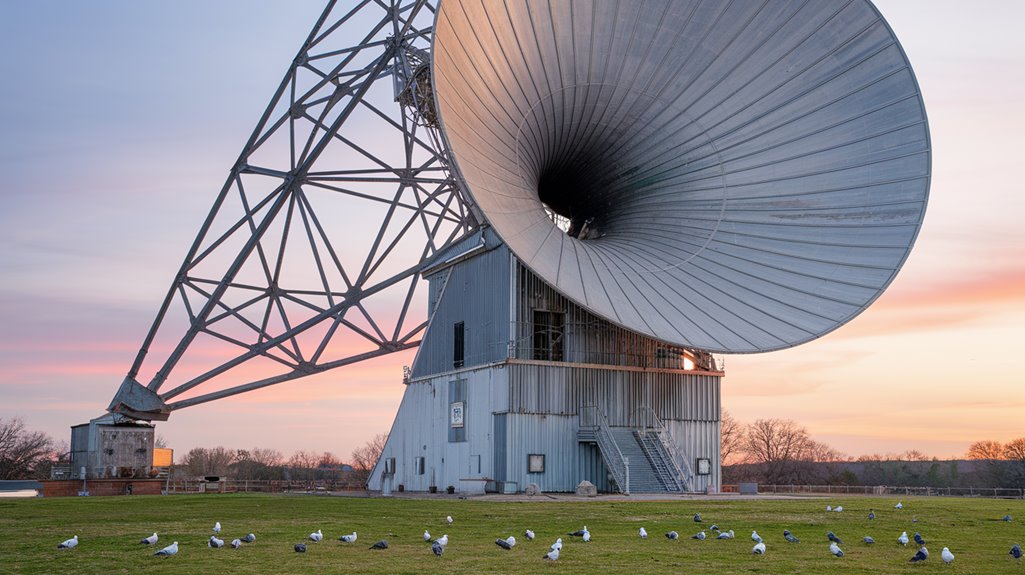
Scientific breakthroughs don't always unfold as planned, as demonstrated by one of astronomy's most significant discoveries in 1964. When Penzias and Wilson stumbled upon cosmic microwave background radiation at Bell Labs, they didn't realize they'd found evidence supporting the Big Bang theory. This case of scientific serendipity earned them the 1978 Nobel Prize in physics.
Like many accidental inventions throughout history, the CMB discovery has left an enduring impact on our understanding of the universe. Scientific discoveries, much like writing, can make progress through small increments of consistent effort.
It's transformed modern cosmology by providing essential evidence for the Big Bang theory, which remains the leading explanation for our universe's origin. The discovery showed that this uniform radiation exists at 2.725 Kelvin temperature, filling every corner of space.
The discovery also reminds you that groundbreaking science can emerge from unexpected places, emphasizing the importance of methodical investigation even when facing seemingly ordinary technical problems.

